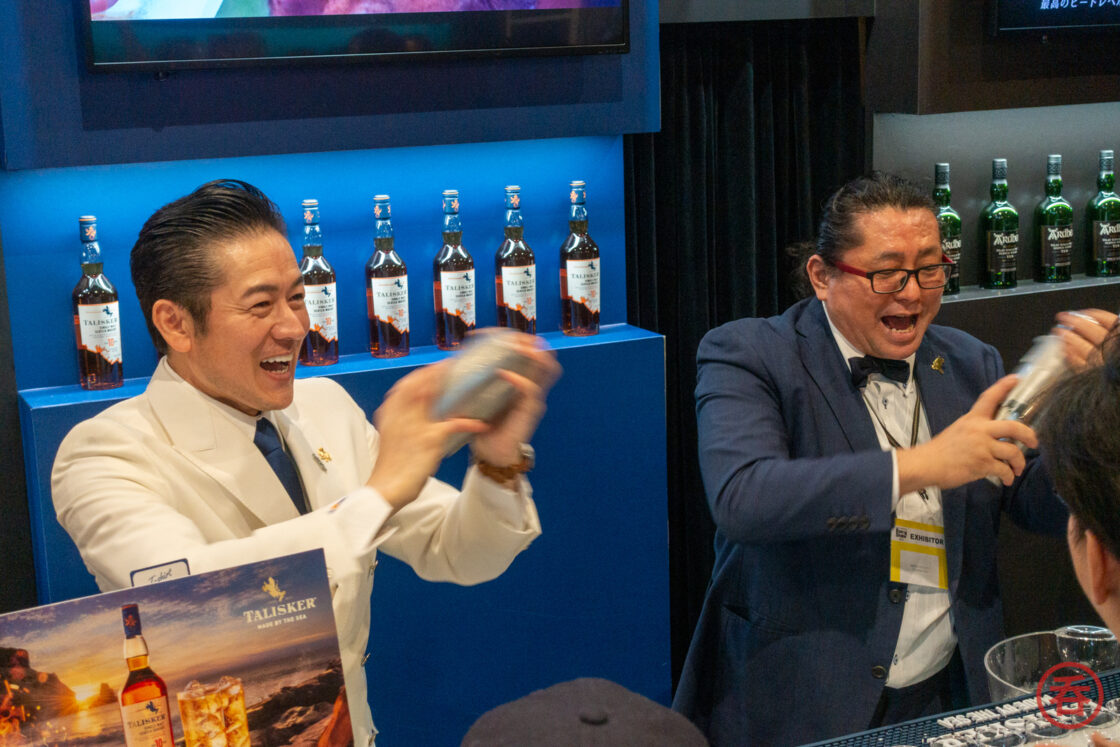On May 11th and 12th, the international drink community once again descended upon Tokyo Dome’s Prism Hall for the Tokyo International BarShow. As always, I attended!
This year’s BarShow was the second “post-COVID” event. While 2023 saw Japanese whisky celebrate its 100th anniversary and the debut of the commemorative Fellow Distillers project, 2024 seems to have returned to the basics of the BarShow.
But what does basic mean here? Rather than celebrating any particular category of spirit or a specific cocktail, the Tokyo International BarShow is about all drinks. Beer, wine, Bourbon, Madeira, Cognac, Japanese whisky, gin, Tequila — one way or another, most major categories are represented. Sake even made its “debut” this year at the Dassai booth!
This year’s special guest was Jason Crawley, the mastermind behind Crawley’s Imperial Shaker.
On a personal note, this year, I was able to participate in a slightly more creative fashion in that I helped out with the conceptualization for Rémy Cointreau’s booth. While I wasn’t behind the bar — that’s a job for actual drinks professionals — it was thrilling to see those concepts turn into reality.
The numbers. This year, 14,500 attendees attended across the two days. I did notice that, at some point, people were being told to wait for entry as the venue was apparently over capacity.
Tokyo International BoothShow
Another thing that struck me about this year’s BarShow is that major companies are spending a lot of time, effort, and yen to make their booths bigger and more extravagant. You don’t simply put out some bottles or drinks and hope people stop by. There needs to be some kind of hook, or, dare I say, theatrics, to attract attention within the 50+ booths. A few examples from this year:
- A roulette wheel and unique prizes for winners at the Sakurao B&D booth
- A “Keep Walking” experience at Diageo’s booth
- A 6-person-only masterclass for Johnnie Blue and Don Julio 1942, also at Diageo’s booth
- Bacardi’s “#Whisk(e)y Theater”
- Countless special cocktail hours with famous brand ambassadors and bartenders





I think you get the point. This can be something of a double-edged sword, though. Booths that are simply too crowded can be offputting. Exclusive experiences like those of Diageo’s booth can be fun and memorable for those who do get to attend, but others can’t be bothered to wait in line or make reservations. To that end, I never even saw the inside of Suntory’s giant Bartender anime collab booth: the line was just too long and you couldn’t even peek inside to get an idea of what awaits.
When coming up with the concepts for the Rémy Cointreau’s sustainability-themed booth, we tried our best to cater to both audiences. We avoided a hard cap on the number of people inside, or a number of drinks per person. Rather than a solid wall separating the booth from the rest of the event space, noren offered a barrier that was still relatively welcoming. A single, larger bar offered drinks using various brands from the company’s portfolio rather than several bars crammed into individual spaces. While I think it was successful, we’ll have to wait and see if the drinks giant takes the same approach next year.


From my perspective, it’s this element of entertainment that makes the BarShow unique among the drinks events in Japan. At the same time, this entertainment factor–and the associated budgets required–makes it very difficult for smaller, independent brands to get noticed. This year did feel significantly more spacious than last year, but I would estimate 60% of the total floor space went to big guns like Suntory, Pernod, Campari, Asahi, Diageo, LVMH, Barcardi, and Remy.
Speaking of the venue
With the plans for the $6B redevelopment of the former Tsukiji Fish Market site including a stadium, rumors were swirling earlier this year that the Tokyo’s Yomiuri Giants baseball team would shift its home stadium away from Tokyo Dome. Rumors that the team’s owner has denied. In any case, Tokyo Dome opened in 1988, meaning the facilities are showing its age. Prism Hall–the venue of the BarShow for the past decade–first opened its doors in 1990, making it nearly the same age.
Between the age of the facilities and evident overcrowding this year, will we see a new venue for the BarShow in the future? I suppose we’ll have to wait and see! Wherever it may be, I’ll see you there next year.

































Hi there! I created and run nomunication.jp. I’ve lived in Tokyo since 2008, and I am a certified Shochu Kikisake-shi/Shochu Sommelier (焼酎唎酒師), Cocktail Professor (カクテル検定1級), and I hold Whisky Kentei Levels 3 and JW (ウイスキー検定3級・JW級). I also sit on the Executive Committees for the Tokyo Whisky & Spirits Competition and Japanese Whisky Day. Click here for more details about me and this site. Kampai!

